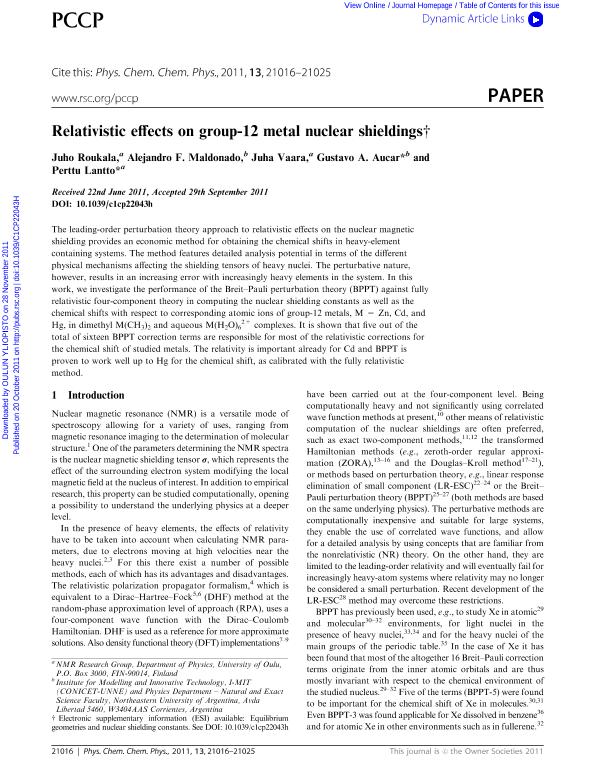Artículo
Relativistic effects on group-12 metal nuclear shieldings
Fecha de publicación:
12/2011
Editorial:
Royal Society of Chemistry
Revista:
Physical Chemistry Chemical Physics
ISSN:
1463-9076
e-ISSN:
1463-9084
Idioma:
Inglés
Tipo de recurso:
Artículo publicado
Clasificación temática:
Resumen
The leading-order perturbation theory approach to relativistic effects on the nuclear magnetic shielding provides an economic method for obtaining the chemical shifts in heavy-element containing systems. The method features detailed analysis potential in terms of the different physical mechanisms affecting the shielding tensors of heavy nuclei. The perturbative nature, however, results in an increasing error with increasingly heavy elements in the system. In this work, we investigate the performance of the Breit-Pauli perturbation theory (BPPT) against fully relativistic four-component theory in computing the nuclear shielding constants as well as the chemical shifts with respect to corresponding atomic ions of group-12 metals, M = Zn, Cd, and Hg, in dimethyl M(CH3)2 and aqueous M(H2O) 62+ complexes. It is shown that five out of the total of sixteen BPPT correction terms are responsible for most of the relativistic corrections for the chemical shift of studied metals. The relativity is important already for Cd and BPPT is proven to work well up to Hg for the chemical shift, as calibrated with the fully relativistic method.
Palabras clave:
Nmr
,
Bppt Method
,
Polarization Propagator
,
Relativistic Effects
Archivos asociados
Licencia
Identificadores
Colecciones
Articulos(IMIT)
Articulos de INST.DE MODELADO E INNOVACION TECNOLOGICA
Articulos de INST.DE MODELADO E INNOVACION TECNOLOGICA
Citación
Roukala, Juho; Maldonado, Alejandro Fabián; Vaara, Juha; Aucar, Gustavo Adolfo; Lanto, Perttu; Relativistic effects on group-12 metal nuclear shieldings; Royal Society of Chemistry; Physical Chemistry Chemical Physics; 13; 47; 12-2011; 21016-21025
Compartir
Altmétricas




